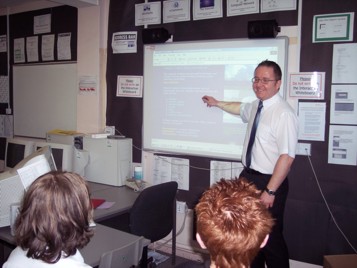| Presentation of Information | |||
|
It is important that information is presented in a way that is understandable
and meaningful. |
|||
| The method of presentation will depend on the intended
audience.
Emphasis on different aspects of the presentation or levels of technical difficulty will vary. The amount of information and depth of detail will also depend on the intended audience. Use of colour and graphics should also be considered. The audience will need time to study the information. It will not be absorbed if it comes too fast! Information gets old...sometimes it needs to be kept up-to-date. Example :
|
Information about a company's new product would be presented differently to customers than to the company salesmen. | ||
These are some of the different ways that information can be
presented:
|
|||
|
|
Information can be presented on interactive whiteboards. | ||


